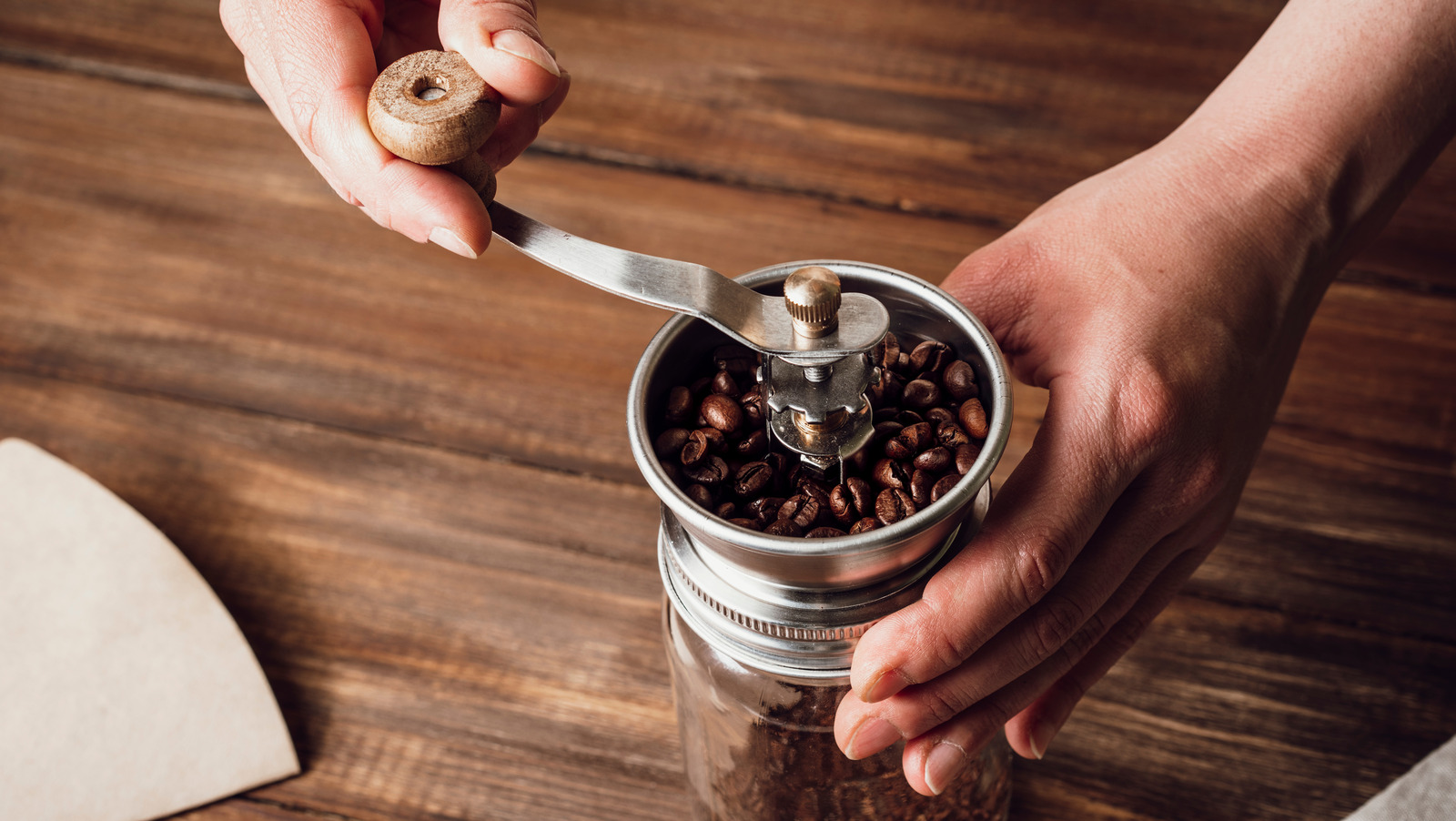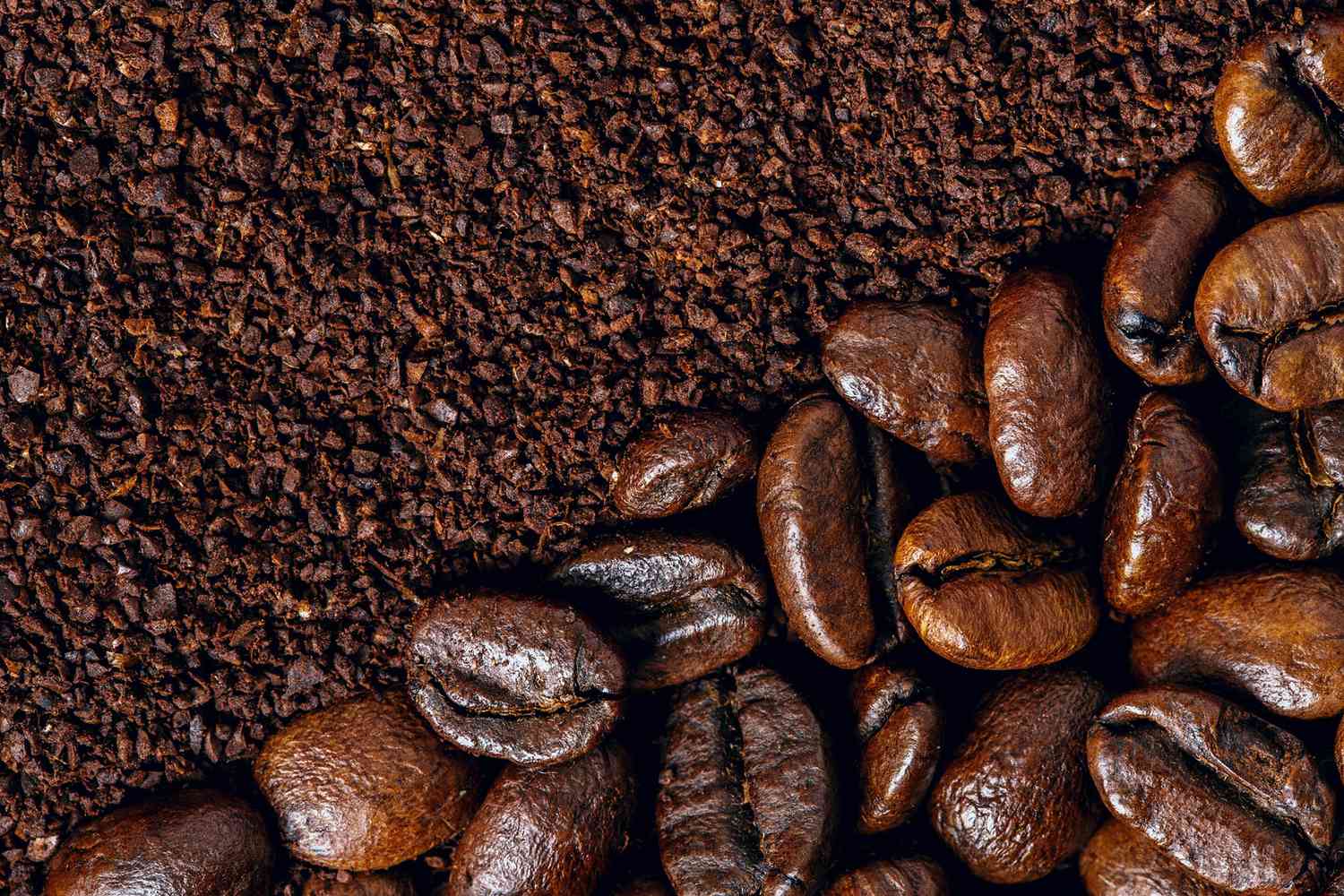In the realm of coffee enthusiasts, the coffee grinder reigns supreme, transforming whole coffee beans into the finely ground particles that brew into a rich and flavorful cup. The rhythmic hum of the burrs, the aroma of freshly ground beans filling the air, and the anticipation of a steaming cup of coffee are all part of the cherished coffee-making ritual. However, not every coffee lover has the luxury of owning a dedicated grinder. Whether you’re a budget-conscious coffee aficionado, a minimalist seeking to declutter your kitchen, or an outdoor adventurer craving a caffeine fix in the wilderness, grinding coffee without a grinder is an art worth mastering. This guide delves into the ingenious methods that allow you to grind coffee without a conventional grinder, ensuring that your coffee-making experience remains uninterrupted, even in the absence of this essential tool.

I. Introduction
A. The significance of coffee grinding
Coffee grinding is an integral step in the coffee-making process, releasing the beans’ hidden essence and unlocking their full flavor potential. When coffee beans are ground, their increased surface area allows for better extraction of flavor and aroma during the brewing process. The grind size, the coarseness or fineness of the ground coffee, plays a crucial role in determining the brewing method and the resulting coffee’s characteristics. A finer grind is ideal for espresso machines, as it allows for a slower, more concentrated extraction, while a coarser grind is better suited for drip coffee makers, producing a smoother, less intense cup.
B. The challenges of grinding coffee without a grinder
While a coffee grinder simplifies the grinding process, its absence doesn’t mean you have to forgo the joy of fresh, ground coffee. However, grinding coffee without a grinder presents its own set of challenges:
-
Achieving Consistent Grind Size: Without the precision of a grinder, it can be difficult to achieve a consistent grind size, which can affect the evenness of extraction and the quality of the brewed coffee.
-
Labor-Intensive Process: Grinding coffee by hand can be more time-consuming and require more physical effort compared to using a grinder.
-
Limited Grinding Options: Some grinding methods may not be suitable for all grind sizes, making it challenging to achieve the perfect grind for certain brewing methods.
Despite these challenges, grinding coffee without a grinder offers a unique and rewarding experience, allowing you to connect with the coffee-making process on a deeper level. It’s an opportunity to appreciate the craftmanship involved in preparing coffee and to savor the rich aroma of freshly ground beans.
II. Essential Tools for Grinderless Coffee
Before embarking on your grinderless coffee grinding journey, it’s crucial to gather the necessary tools. Here are some versatile and readily available options:
A. Mortar and pestle: The classic grinding duo
The mortar and pestle, a time-honored tool used for centuries, is an excellent choice for grinding coffee without a grinder. The mortar provides a sturdy base, while the pestle allows for controlled grinding. Choose a mortar and pestle made from durable materials like granite or ceramic for optimal performance.
B. Rolling pin: A versatile tool for crushing beans
A rolling pin, typically used for rolling out dough, can also be employed for crushing coffee beans. Opt for a heavy-duty rolling pin made from wood or stone for better results.
C. Heavy-duty bag and mallet: A rugged method for coarse grinds
For a more rustic approach, a heavy-duty bag and a mallet can be used to coarsely grind coffee beans. Place the beans in a sturdy bag, such as a canvas or burlap bag, and use a mallet to crush them into desired coarseness.
D. Manual food processor: A modern approach for consistent grinds
A manual food processor, equipped with a grinding blade, offers a more modern and efficient way to grind coffee without a dedicated grinder. Choose a food processor with a powerful motor and a sharp blade for optimal results.
III. Grinding with a Mortar and Pestle
A. Selecting the right mortar and pestle
The size and material of your mortar and pestle will influence the grinding process. A larger mortar allows for grinding larger batches of beans, while a smaller one is suitable for smaller quantities. Choose a pestle that fits comfortably in your hand and has a smooth, rounded bottom for efficient grinding.
B. Preparing the coffee beans
Start with fresh, high-quality coffee beans. Rinse the beans briefly under cold water to remove any dust or impurities. Pat them dry with a clean towel and let them air dry for a few minutes to prevent them from sticking together during grinding.
C. Grinding technique: A rhythmic motion for even grinds
Place a small handful of beans into the mortar and position the pestle over them. Using a circular motion, apply gentle pressure and grind the beans in a rhythmic pattern. Avoid pressing too hard, as this can crush the beans into uneven pieces. Gradually rotate the pestle and work your way towards the center of the mortar to ensure all the beans are ground. As you grind, listen for a consistent crushing sound.
D. Adjusting grind size: Varying pressure and grinding time
The coarseness of your grind can be adjusted by varying the pressure applied with the pestle and the duration of grinding. For a coarser grind, use lighter pressure and grind for a shorter time. For a finer grind, apply more pressure and grind for a longer period. Be patient and experiment to achieve the desired consistency for your brewing method.
IV. Grinding with a Rolling Pin
A. Choosing a suitable rolling pin
A heavy-duty rolling pin made from wood or stone is ideal for grinding coffee beans. A heavier rolling pin provides better leverage and allows for more efficient crushing. Avoid using a rolling pin made from fragile materials like glass, as it can break under pressure.
B. Preparing the coffee beans
Similar to using a mortar and pestle, start with fresh, high-quality coffee beans. Rinse them briefly and pat them dry with a clean towel. Spread the beans in a single layer on a clean, flat surface like a cutting board.
C. Rolling technique: Applying even pressure for consistent grinds
Apply even pressure as you roll the rolling pin back and forth over the beans. Move slowly and deliberately, ensuring all the beans are crushed to a similar size. For a more consistent grind, you can roll the beans in sections, working your way from one end of the board to the other.
D. Adjusting grind size: Varying the number of passes
The number of times you roll the pin over the beans will determine the coarseness of the grind. For a coarser grind, roll the pin over the beans a few times. For a finer grind, repeat the rolling process several times, checking the consistency in between passes.
V. Grinding with a Heavy-Duty Bag and Mallet
A. Selecting a sturdy bag and mallet
Choose a heavy-duty bag made from a strong material like canvas or burlap. Ensure the bag is large enough to accommodate the desired amount of coffee beans without tearing. A sturdy mallet made of wood or rubber is ideal for crushing the beans.
B. Preparing the coffee beans
As with other methods, start with fresh, high-quality coffee beans. Rinse them briefly and pat them dry with a clean towel. Place the beans inside the bag, leaving some space at the top to prevent overfilling.
C. Crushing technique: Controlled blows for a coarse grind
Twist the top of the bag to close it securely. Hold the bag firmly on a flat surface and use controlled blows with the mallet to crush the beans. Start with lighter blows and gradually increase the force as needed. Aim for a consistent crushing sound throughout the process.
D. Adjusting grind size: Varying the force and number of blows
The coarseness of the grind can be controlled by adjusting the force of the mallet blows and the number of times you hit the bag. Lighter blows and fewer strikes will result in a coarser grind, while heavier blows and more strikes will produce a finer grind. Be mindful not to over-crush the beans, as this can lead to an overly bitter coffee.
VI. Grinding with a Manual Food Processor
A. Choosing a manual food processor with a grinding blade
For a more efficient and consistent grinding experience, consider using a manual food processor equipped with a sharp grinding blade. Choose a food processor with a sturdy build and a powerful motor capable of handling coffee beans effectively.
B. Preparing the coffee beans
Similar to other methods, use fresh, high-quality coffee beans. Rinse them briefly and pat them dry with a clean towel. The amount of beans you can grind at once will depend on the capacity of your food processor. It’s best to start with a smaller batch to avoid overloading the processor.
C. Grinding technique: Short pulses for controlled grind size
Place the beans into the food processor bowl and secure the lid tightly. Use short pulses to grind the beans. Start with a few short pulses and gradually increase the pulsing time as needed. Be mindful not to over-grind the beans, as this can lead to a bitter taste in your coffee.
D. Adjusting grind size: Varying pulse duration and number of pulses
The grind size can be controlled by adjusting the duration and number of pulses. Shorter pulses with fewer repetitions will result in a coarser grind, while longer pulses with more repetitions will yield a finer grind. Experiment with different pulse lengths and timings to achieve the desired consistency for your brewing method.